
where - snorkel/dive
- hire prices - safety suits
- sea conditions - Goat
Island - café - aquariums
- schools
| The Goat Island marine reserve was established in 1975, and since then, the fished species like snapper and crayfish have become more numerous. More importantly, they have become used to people swimming with them, and some have even lost all fear. So, what would it be like to snorkel in this 'marine aquarium'? Try this unforgettable experience out and come snorkelling at Goat Island, but first check the sea conditions. |

where - snorkel/dive
- hire prices - safety suits
- sea conditions - Goat
Island - café - aquariums
- schools
-- Seafriends home -- about
seafriends -- Rev 20070808,
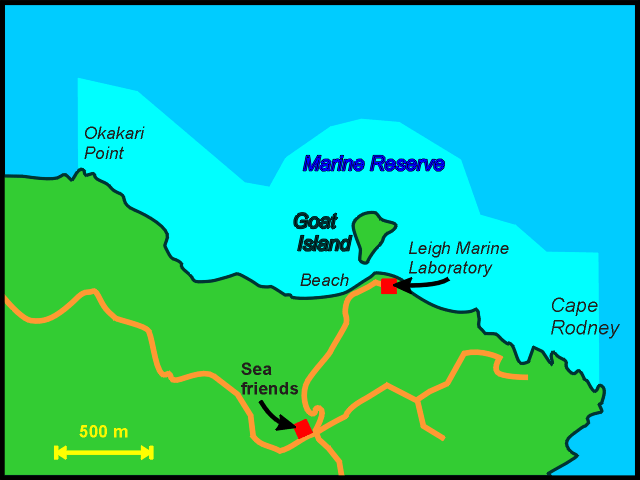  Follow these links to read more about the Goat Island marine reserve and about marine conservation and how we expect too much of marine reserves, which results in myths and fallacies. Obviously we need to be smarter. |
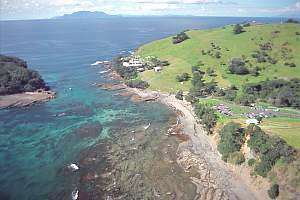 |
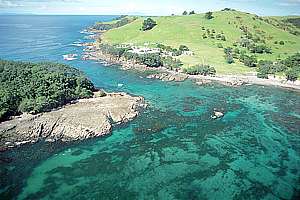 |
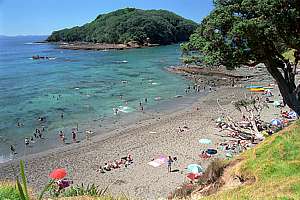 |
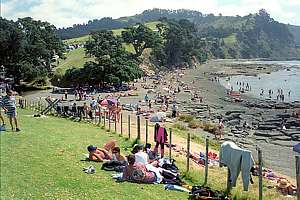 |
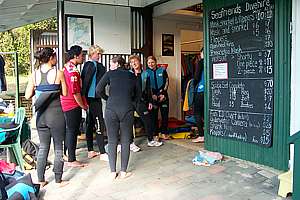 Of
course you haven't come to Goat Island to just lie on the beach. You want
to swim and look at the fishes. For this you need a good mask and fins
and to protect yourself, also a good wetsuit. Do not be tempted to hire
these anywhere else but from Seafriends, because in doing so you will enable
us to maintain and expand this educational web site and run school programmes,
while also fighting to save our seas for future generations. Become a Seafriend! Of
course you haven't come to Goat Island to just lie on the beach. You want
to swim and look at the fishes. For this you need a good mask and fins
and to protect yourself, also a good wetsuit. Do not be tempted to hire
these anywhere else but from Seafriends, because in doing so you will enable
us to maintain and expand this educational web site and run school programmes,
while also fighting to save our seas for future generations. Become a Seafriend!
At Seafriends you will be amazed at the hundreds of dive and snorkel suits, masks and fins and their high quality and cleanliness. The staff at Seafriends take their time to make everything fit precisely and they also give you advice on the conditions of the day. Follow these links for hiring dive gear, and how to use it, and for dive gear prices. For big groups and schools we have special discounts and an unforgettable school programme consisting of snorkelling, beach study and lecture with aquarium visit. |
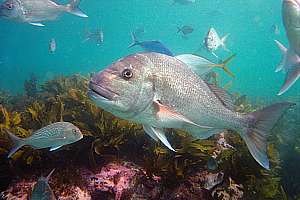 |
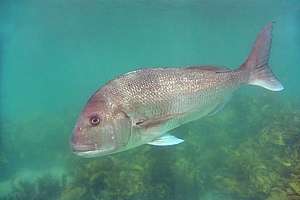 |
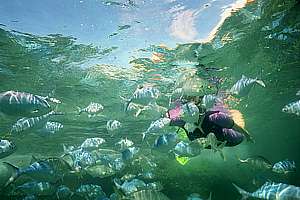 |
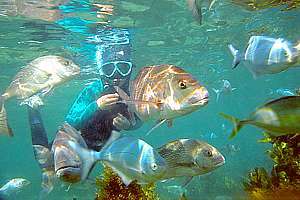 |
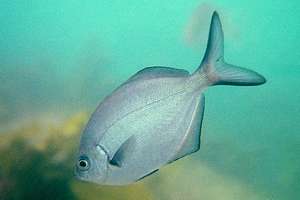 If
you want to know more about the many fishes that you see either around
you, or at some distance hiding under a rocky ledge, you will most certainly
be interested to read all you can about
Goat Island. In this very informative and large chapter you can read
about the history of Goat Island, its many secret dive spots and its many
inhabitants. This little fish for instance, looks like a blue maomao but
is in fact a grey maomao or sweep. We are also working on a large section
about species identification and classification,
and the blue maomao and sweep are already there, as is also the snapper,
goatfish and several others you will meet on your very first swim. If
you want to know more about the many fishes that you see either around
you, or at some distance hiding under a rocky ledge, you will most certainly
be interested to read all you can about
Goat Island. In this very informative and large chapter you can read
about the history of Goat Island, its many secret dive spots and its many
inhabitants. This little fish for instance, looks like a blue maomao but
is in fact a grey maomao or sweep. We are also working on a large section
about species identification and classification,
and the blue maomao and sweep are already there, as is also the snapper,
goatfish and several others you will meet on your very first swim. |
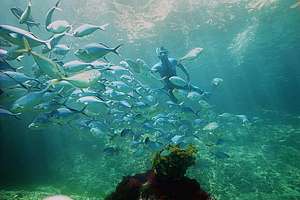 Snorkelling
in the sea, unimpeded by clumsy dive gear, is hugely interesting and exciting.
It can also be very safe, much safer than swimming without mask or fins,
if only you knew how to do it. Experienced snorkeldivers or free-divers
as they are called, can stay under for up to a minute on a single breath,
reaching depths of 10m or more, and you can do this too. Once you have
mastered it, this skill will remain with you, wherever you go. So read
our snorkelling without fear course
and follow it to the letter. In this free course you will learn how to
use mask and flippers and what to do and not to do in the sea. You will
learn techniques for going in and out of the sea, and for staying down
on a single breath. You'll be amazed how much you will progress in a single
hour. Tell others about it. Snorkelling
in the sea, unimpeded by clumsy dive gear, is hugely interesting and exciting.
It can also be very safe, much safer than swimming without mask or fins,
if only you knew how to do it. Experienced snorkeldivers or free-divers
as they are called, can stay under for up to a minute on a single breath,
reaching depths of 10m or more, and you can do this too. Once you have
mastered it, this skill will remain with you, wherever you go. So read
our snorkelling without fear course
and follow it to the letter. In this free course you will learn how to
use mask and flippers and what to do and not to do in the sea. You will
learn techniques for going in and out of the sea, and for staying down
on a single breath. You'll be amazed how much you will progress in a single
hour. Tell others about it. |
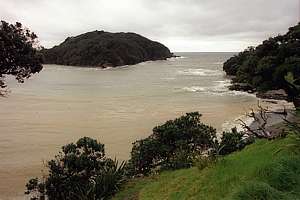 When
there is no fishing in a protected area, one would expect the fishes there
to become more numerous, and also older, thus bigger. This is entirely
true in an ideal situation, but unfortunately the seas around New Zealand
have become rather sick. Everywhere, even inside protected areas, there
is less fish and many species are disappearing from their areas. Goat Island
is no exception. Apparently, marine reserves do not protect against the
new threats in the sea. Read more about the promise
and disappointment of marine reserves and how New
Zealand's shellfish populations have collapsed. When
there is no fishing in a protected area, one would expect the fishes there
to become more numerous, and also older, thus bigger. This is entirely
true in an ideal situation, but unfortunately the seas around New Zealand
have become rather sick. Everywhere, even inside protected areas, there
is less fish and many species are disappearing from their areas. Goat Island
is no exception. Apparently, marine reserves do not protect against the
new threats in the sea. Read more about the promise
and disappointment of marine reserves and how New
Zealand's shellfish populations have collapsed.
For instance, in winter time, when people do not visit the marine reserve, the sea can look quite different as this photo shows. Mud has entered the sea from the land, and this creates serious problems for marine creatures, without exception. Obviously a marine reserve does not protect against this kind of threat. You may now be interested to read more about marine degradation. It is a terrible and rapidly worsening situation that we must fight with all our might. By doing business with Seafriends, you help to fund this fight. |
Seafriends Marine Conservation & Education Centre and Café:
7 Goat Island Rd; Leigh. Ph/Fx 094226212; e-mail.